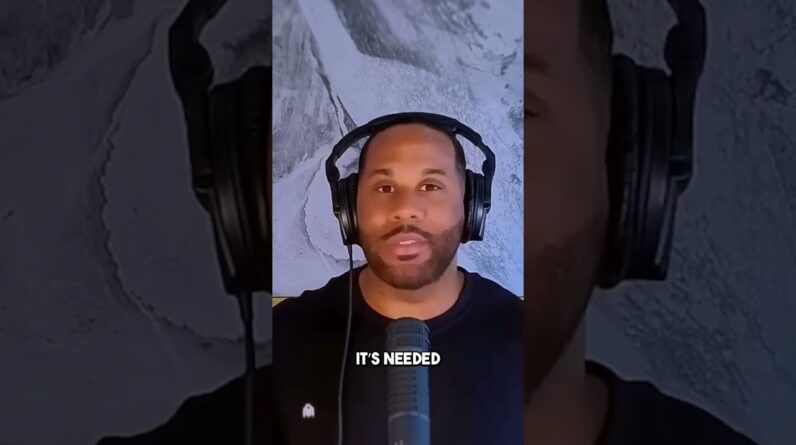We bring you Caleb Silver’s expert insights on whether a recession is on the horizon. In this blog post, we will delve into the comprehensive analysis provided by Caleb and explore the factors that may indicate an impending economic downturn. Join us as we unpack the key indicators and gain a better understanding of the possible challenges that lie ahead. Let’s dive into Caleb Silver’s invaluable knowledge to navigate the uncertain financial landscape together.
Caleb Silver’s Insights: Is a Recession on the Horizon?
Introduction
As we navigate the ever-changing landscape of the global economy, it’s only natural to wonder if we are on the brink of another recession. With economic indicators flashing warning signs, like the inverted yield curve persisting for 16 months, concerns are mounting. In this article, we’ll explore the current state of the economy and analyze various factors that contribute to the possibility of a recession.
The Government’s Preventive Measures
The government, recognizing the potential for an economic downturn, has taken proactive measures to prevent a recession similar to the 2008 financial crisis. By implementing policies aimed at bolstering economic growth and stability, they hope to mitigate the risk of recession. Some of these measures include:
- Increasing government spending to stimulate the economy.
- Cutting interest rates to encourage borrowing and investment.
- Offering tax incentives to businesses and individuals to boost spending.
- Implementing regulations to prevent risky behavior in the financial sector.
The Inverted Yield Curve and Its Significance
One key indicator that experts closely monitor is the yield curve. An inverted yield curve occurs when long-term interest rates fall below short-term rates. Historically, this phenomenon has preceded many recessions, making it a cause for concern. The fact that the yield curve has remained inverted for 16 months raises questions about the impending recession.
Bank Failures and Their Impact
The recent spate of bank failures has tightened lending and reduced the money supply, creating further uncertainty in the economy. These failures, coupled with the prolonged inverted yield curve, have generated a sense of excitement and trepidation among market participants. The risk mentality has changed as individuals and businesses factor in the possibility of a potential bailout.
Changing the Definition of a Recession
To add to the complexities surrounding recessions, there have been talks of potentially changing the definition of a recession. This proposition aims to ensure that economic downturns are accurately reflected and measured. However, any change in the definition could have far-reaching implications for how recessions are understood, tracked, and remedied.
Doubts Regarding an Imminent Recession
The prolonged inverted yield curve, while indicative of an economic slowdown, raises doubts about the immediacy of an impending recession. Economists and financial experts are divided in their predictions, with some projecting a recession in the near future, and others arguing that the current economic climate may not necessarily result in a recession. The uncertainty surrounding the timing and severity of a potential recession adds an additional layer of complexity to the situation.
AI and Bank Failures Generating Excitement and Uncertainty
The emergence of artificial intelligence (AI) in the financial sector has brought both excitement and uncertainty. While AI holds the promise of streamlining processes and improving efficiencies, there are concerns about its potential impact on employment and market stability. Moreover, the recent bank failures have created additional uncertainty as the industry grapples with the fallout and works towards restoring stability.
Conclusion
In conclusion, while the possibility of a recession looms, the government’s preventive measures and intervention have helped avert a crisis similar to the one experienced in 2008. The inverted yield curve, prolonged for 16 months, raises concerns but also sparks doubts about the timing of a recession. Bank failures and the advent of AI add further complexity to the economic landscape. As we navigate through these uncertain times, it is essential to stay informed, monitor economic indicators, and adapt our strategies accordingly.
FAQs (Frequently Asked Questions)
-
Q: What is an inverted yield curve?
A: An inverted yield curve occurs when long-term interest rates fall below short-term rates, historically signaling a potential recession. -
Q: How long has the yield curve been inverted?
A: The yield curve has been inverted for 16 months, raising concerns about the economy. -
Q: What preventive measures has the government taken to prevent a recession?
A: The government has increased spending, lowered interest rates, offered tax incentives, and implemented regulations to stimulate economic growth. -
Q: How do bank failures affect the economy?
A: Bank failures tighten lending, reduce the money supply, and create uncertainty in the financial sector. -
Q: What is the role of AI in the current economic climate?
A: AI has generated excitement and uncertainty, holding the potential for streamlining processes but also raising concerns about employment and market stability.










